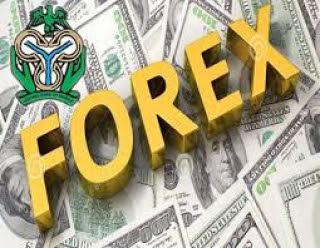The Naira depreciated further early Tuesday morning at the parallel market, exchanging at N722/$1, representing a depreciation of 1.26% from N713/$1 it traded on Monday.
Information obtained from black market traders on the trading trend by our correspondent, indicated that the Nigerian currency, however, recorded an appreciation of 0.84% at the cryptocurrency peer-to-peer (P2P) FX market, to trade at a minimum of N723/$1, from N729.1/$1 that it traded early Monday morning.
The Naira had in the preceding day closed at N436/$1 at the official Investors and Exporters (I&E) window, indicating a slight appreciation of 0.08% from N436.33/$1 recorded in the previous session.
On Monday, the opening indicative rate indicated that the local currency closed at N435.67/$1 on Monday as against N434.83/$ recorded in the previous session while the highest rate it recorded during intra-day trading was N441/$1 before it settled at N436/$1. The Naira traded as low as N423/$1 during intra-day trading.
A total of $78.1 million in FX value was traded in the Investors and Exporters window on Monday, which is 26.4% lower than the $106.11 million that exchanged hands on Friday.
Nigeria’s external reserve stood at $38.46 billion last Friday, indicating a decline of 0.06% from $38.49 billion it stood at the preceding day.
In recent times, the Central Bank of Nigeria (CBN) has been providing dollars to FX traders at the official window and until recently the Bureau De Change (BDC) traders over the past years to ensure some level of exchange rate stability for the local currency.
Available data from the apex bank on its interventions in the FX market indicated that it injected $3.36 billion into the market in December 2021 and January this year as part of its efforts to stabilize the national currency’s exchange rate.
Analysts have linked the FX usually used for the interventions as partly responsible for the nation’s low foreign reserve which has been oscillating around $38 billion and $41 billion for several months now.
But then, they also linked the low foreign reserve to other factors, including the changing pattern of foreign trade especially as it relates to the global supply chain in recent months, institutional changes in the economy and structural shifts in production, amongst others.




